Sacred Solitude: Exploring Monastic Retreats for Contemporary Spiritual Journeys
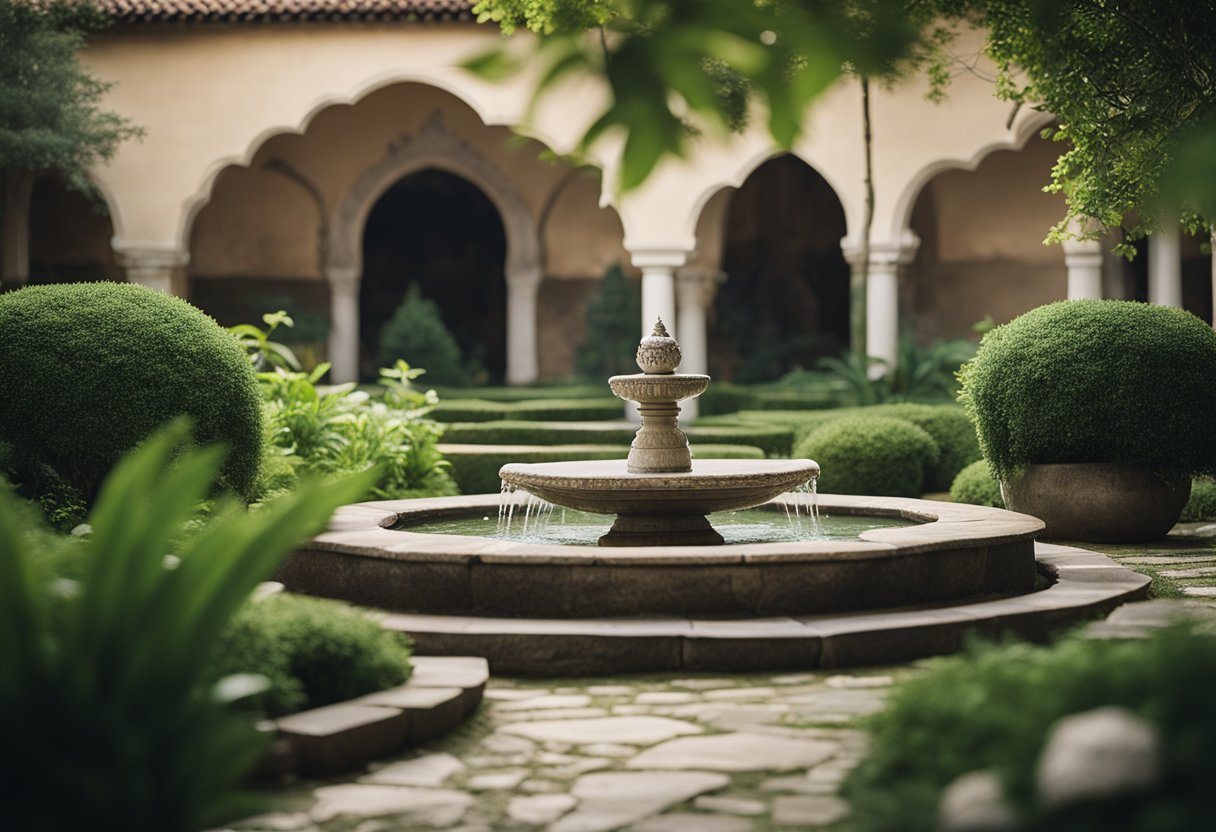
Updated On: April 24, 2024 by Panseih Gharib
In search of serenity and a deeper connection to the spirit, modern seekers are increasingly turning to monastic retreats as sanctuaries of peace and introspection. These havens of silence offer a reprieve from the clamour of daily life, allowing individuals to immerse themselves in the essence of sacred solitude. Through the ancient traditions of monastic living, retreatants are invited to explore a spiritual path that is often counter to the rhythms of the contemporary world.
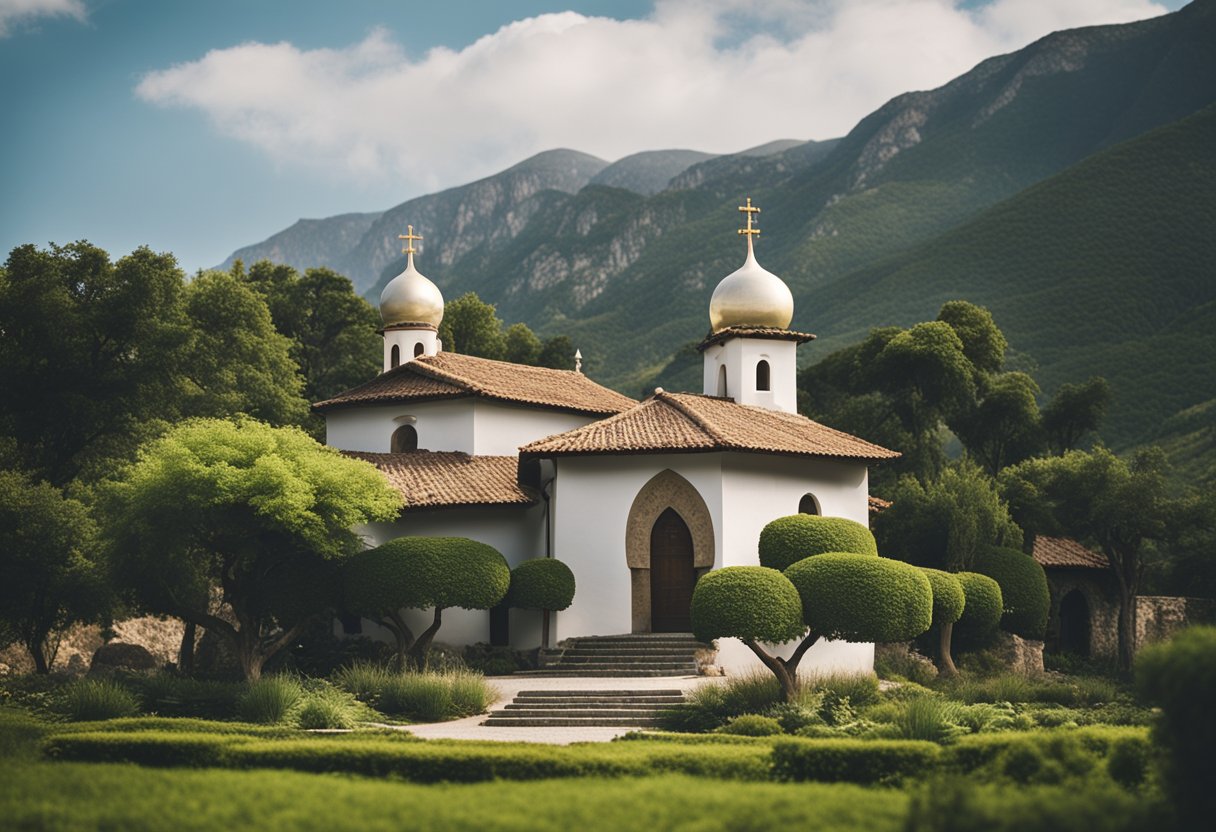
Monastic retreats provide an opportunity to refocus on the spiritual aspects of existence while being nestled in environments that foster personal reflection and growth. The tranquil grounds and structured routine of a monastery offer a unique setting where one can engage in contemplation, self-discovery, and renewal. Such retreats often blend the historical and cultural context of the monastic lifestyle with the needs of today’s seekers, creating a bridge that connects past and present in the pursuit of spiritual well-being.
The Essence of Sacred Solitude
Embarking on a spiritual retreat can be a transformative experience, one that harnesses the essence of sacred solitude through silence, prayer, and introspection. Within these peaceful sojourns, we find clarity and renewal.
A Journey into Silence and Prayer
In the pursuit of spiritual rejuvenation, silence and prayer are our steadfast companions. These elements serve as the foundation for a deep encounter with the self and the divine. A retreat into silence allows us to listen intently to the whispers of our own hearts and the voice of the transcendent. Through prayer, whether fixed or spontaneous, we reach out beyond the confines of our everyday existence, seeking guidance and solace.
Private Retreats Vs Group Retreats
When considering a retreat, we are presented with two distinct paths: private retreats and group retreats. Opting for a private retreat means immersing oneself in solitude, focusing solely on personal reflection without the distraction of others. In contrast, group retreats offer shared experiences, wherein collective silence and corporate worship can foster a sense of community and shared purpose. Each style caters to different needs and can be equally enriching.
Understanding Monastic Solitude
The concept of monastic solitude draws on centuries of spiritual tradition. It’s a choice to step away from the clamour of society into a space of seclusion. Here, solitude becomes not only a physical state but a state of being, allowing for complete focus on meditation and contemplation. Monastic solitude is often characterised by a structured routine, with periods allocated for silent reflection, reading of sacred texts, or nature walks in serene settings. Understanding the historical and spiritual significance of such practices reminds us of the age-old human quest for meaning and connection beyond the superficial.
Historical and Cultural Context of Monastic Retreats
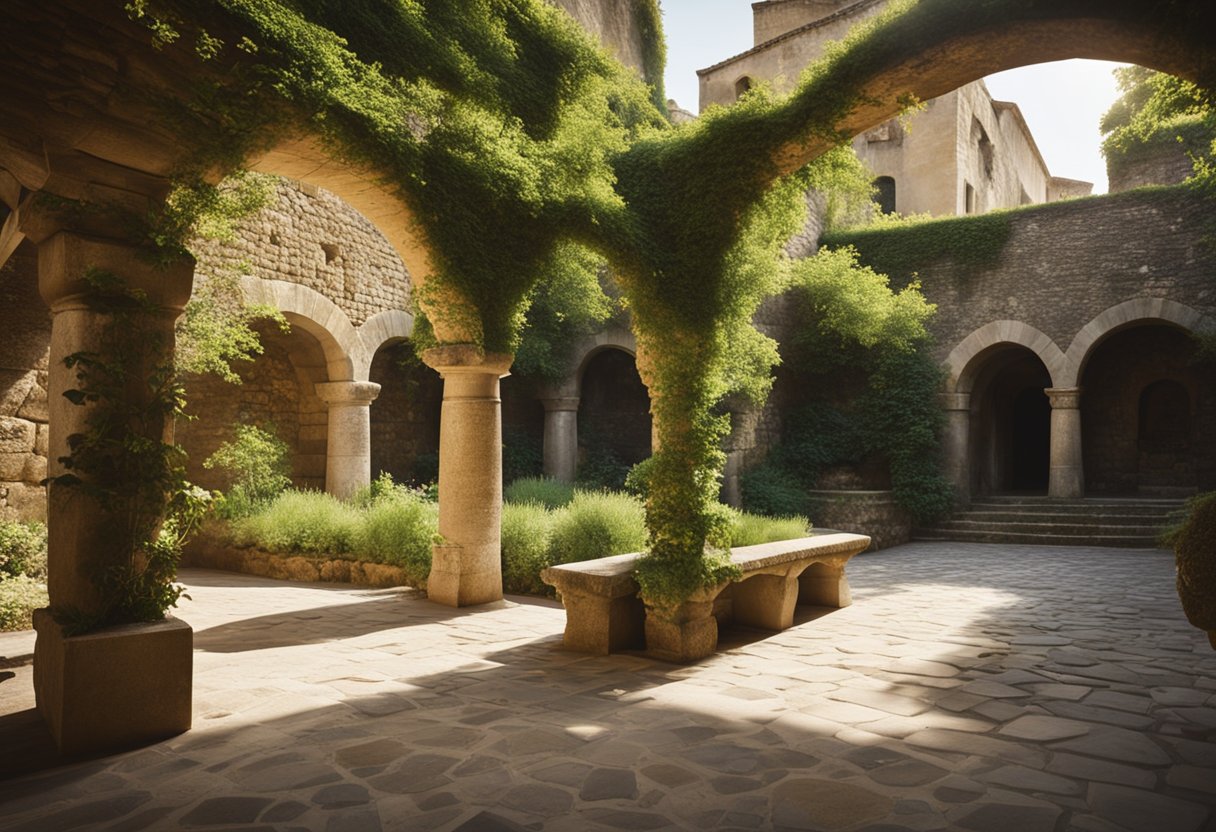
In this section, we explore the profound impact of monastic traditions on modern spiritual retreats, including the enduring legacy of Saint Benedict, the widespread influence of Cistercian monasteries, and the continued relevance of monasticism in contemporary times.
The Legacy of Saint Benedict
Saint Benedict of Nursia, a figure revered for his rule that laid the foundations for Western monasticism, emphasised discipline, communal living, and prayer. His guidelines not only shaped monastic life within Benedictine monasteries but have also been adapted by individuals seeking a more contemplative way of life, within and outside of monastic walls.
Cistercian Monasteries and Their Influence
Cistercian monasteries, emerging from the Benedictine tradition, fostered a blend of manual labour, prayer, and solitude, significantly influencing Christian spirituality. Their emphasis on self-sufficiency and silent reflection has attracted people from all spheres, looking to incorporate elements of monastic serenity into their busy modern lives.
Monasticism in the Modern Era
Today, many monasteries, including those inspired by the Benedictine and Cistercian traditions, open their doors to modern seekers of solitude and spiritual depth. These retreats provide participants with a living history experience, where they can engage with practices such as lectio divina and communal prayer, resonating with humanity’s innate desire for peace and introspection.
The Experience of Monastic Retreats
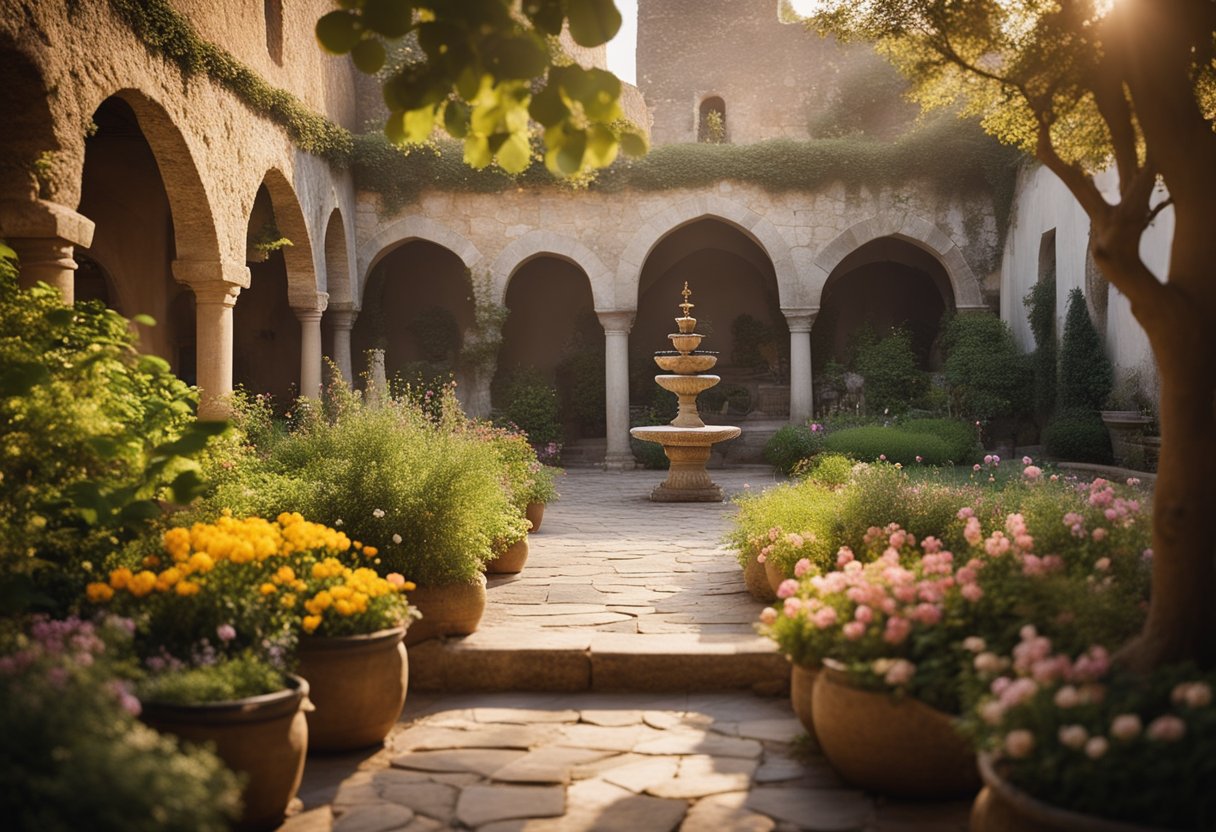
We find that participating in a monastic retreat offers a unique opportunity to step away from the hustle of everyday life and immerse oneself in a regimen rooted in spirituality and simplicity. It enables a deepening of faith and a reconnection with oneself through communal prayers, shared meals, and the hallowed silence that pervades these sacred spaces.
Daily Life in a Monastic Retreat
The structure of a day within a monastic retreat is tailored to foster reflection and spiritual growth. Retreatants rise early to join the monastic community in morning prayers and the Eucharist, setting a reverent tone for the day. The rhythm of life here is punctuated by meals taken in common, where simple, nourishing food is shared in fellowship. Time is set aside for personal reflection and engagement with the community, whether through participation in chores or leisurely walks within the retreat’s tranquil confines.
Liturgy and Community Interaction
The cornerstone of a monastic retreat is the liturgy, a series of services that mark the hours of the day and invite both contemplation and celebration of the divine. Attendees are often welcomed to partake in these moments of community worship, finding connection with others through shared ritual and song. Interaction with the community— both lay and monastic — during these times can be profound, contributing to a sense of belonging and shared purpose.
Monastic Retreats and Contemplation Practice
A staple for many seeking a monastic experience, silent retreats are dedicated to inner exploration and the practice of contemplation. During these retreats, participants are encouraged to embrace silence as a spiritual discipline, creating space to listen and be introspective. Traditional contemplation practices are often guided, helping individuals to navigate their spiritual journey within the framework of the retreat’s serene environment.
The Role of Nature and Environment in Monastic Retreats
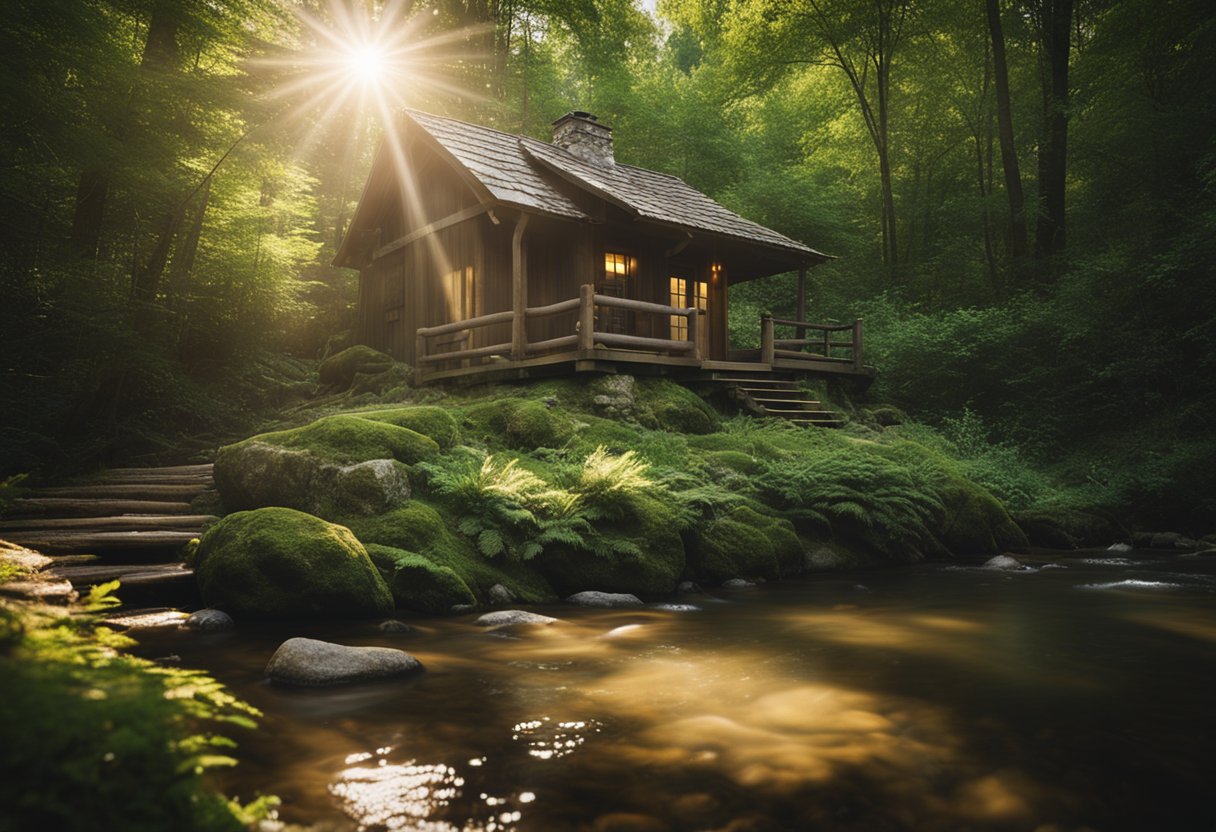
In monastic retreats, nature isn’t just a backdrop; it’s a vital component that supports the quest for solitude and inner peace. We recognise the profound role the environment plays in nurturing the spiritual journey of modern seekers.
The Importance of Natural Surroundings
We understand that natural surroundings are not mere settings but are core to the essence of monastic retreats. These spaces are deliberately chosen and designed to facilitate a deep connection with oneself and the divine. Reflecting upon the pristine beauty of nature, individuals on retreat are encouraged to tune into the tranquil rhythms of the earth. Monastic communities, known for their stewardship of the land, curate landscapes that are not only visually harmonious but also encourage a sense of unity with the environment.
Gardens, Trails, and the Ongoing Search for Peace
Our gardens and trails offer a tangible pathway to tranquillity. Strolling through lush gardens or walking along nature trails serves as an active meditation, helping to still the mind and soothe the soul. The act of walking is transformed into a pilgrimage as each step leads one closer to a state of peace. The careful maintenance of these areas reflects our ongoing search for serenity — a testament to the belief that the environment is a sanctified space crucial for spiritual growth. These outdoor elements are a key feature of our retreats, providing a natural sanctuary where silence is not just heard but felt.
We foster spaces where the natural world and personal introspection are woven seamlessly together, affirming that the journey towards peace is as much about the external journey through natural beauty as it is about the internal exploration of the self.
Exploring the Monastic Retreats
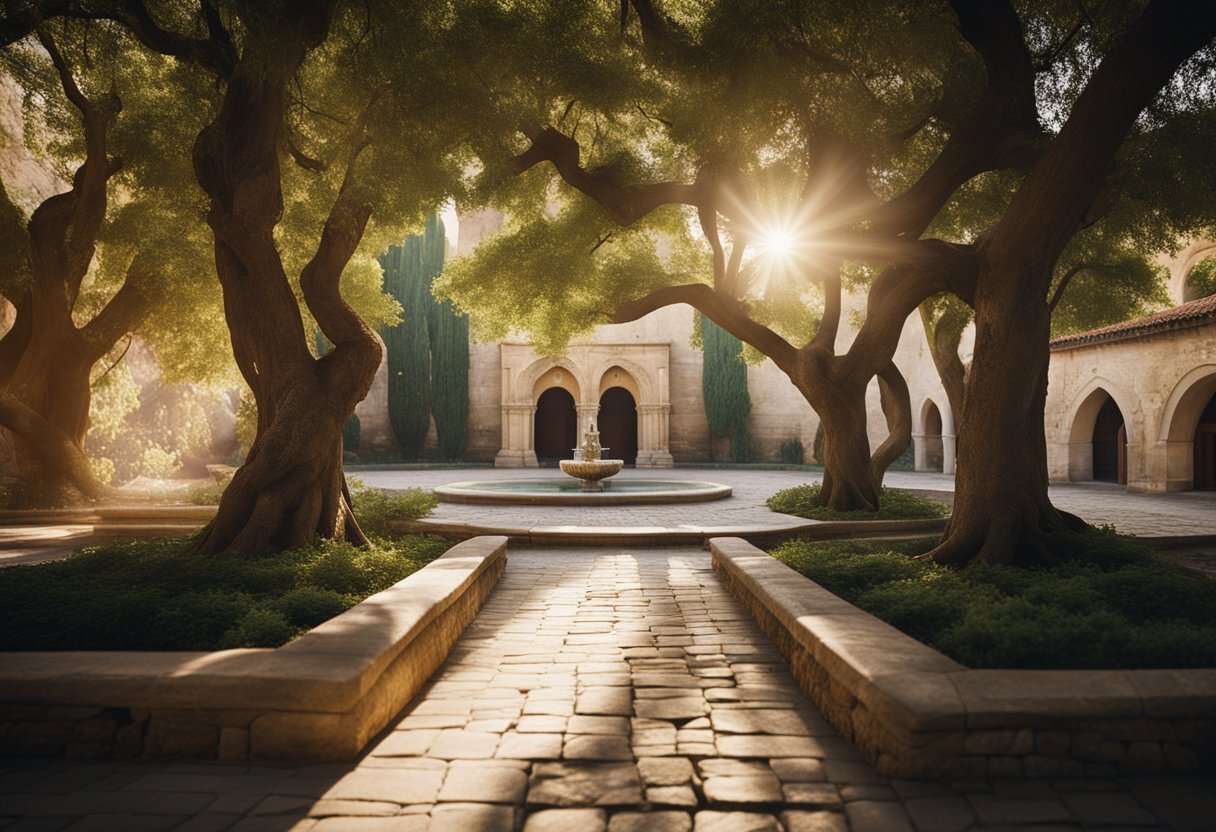
On our journey through monastic retreats, we immerse ourselves in the profound serenity and striking architecture that define these sacred spaces. As we wander the grounds, we’re invited to appreciate both the visual grandeur of the buildings and the tranquillity that pervades the gardens and enclosures.
Architectural Marvels of Monastic Life
We can’t help but be struck by the meticulous architecture of the monasteries we visit. The precision of carved stone, evident in each archway and spire, speaks volumes about the skilled craftsmanship that has stood the test of time. Standing within the enclosure of a monastery, such as the magnificent Monastery of Santa María in Sobrado dos Monxes, we gain an authentic sense of connection to the past.
Gardens are an integral part of monastic life, serving not just as a source of physical sustenance but as a means for spiritual cultivation as well. Strolling through orderly plantings of lavender and other herbs, we encounter a blend of purpose and beauty, where every plant is both a component of the sacred landscape and a practical resource.
The Spiritual Significance of Monastic Retreats
The monastic garden, for instance, represents more than an area of horticultural activity; it is a testament to the yearning for inner peace. Beyond its walls, the church stands sentinel, its spires reaching toward the heavens, beckoning us to reflect and find solace in its hallowed interior.
As we navigate these sites, we uncover layers of fellowship and contemplation woven into the fabric of monastic life. The open property, often surrounded by natural beauty, further denotes a sanctuary for the soul—a space where one can seek communion with the divine away from worldly distractions.
Personal Reflection and Growth
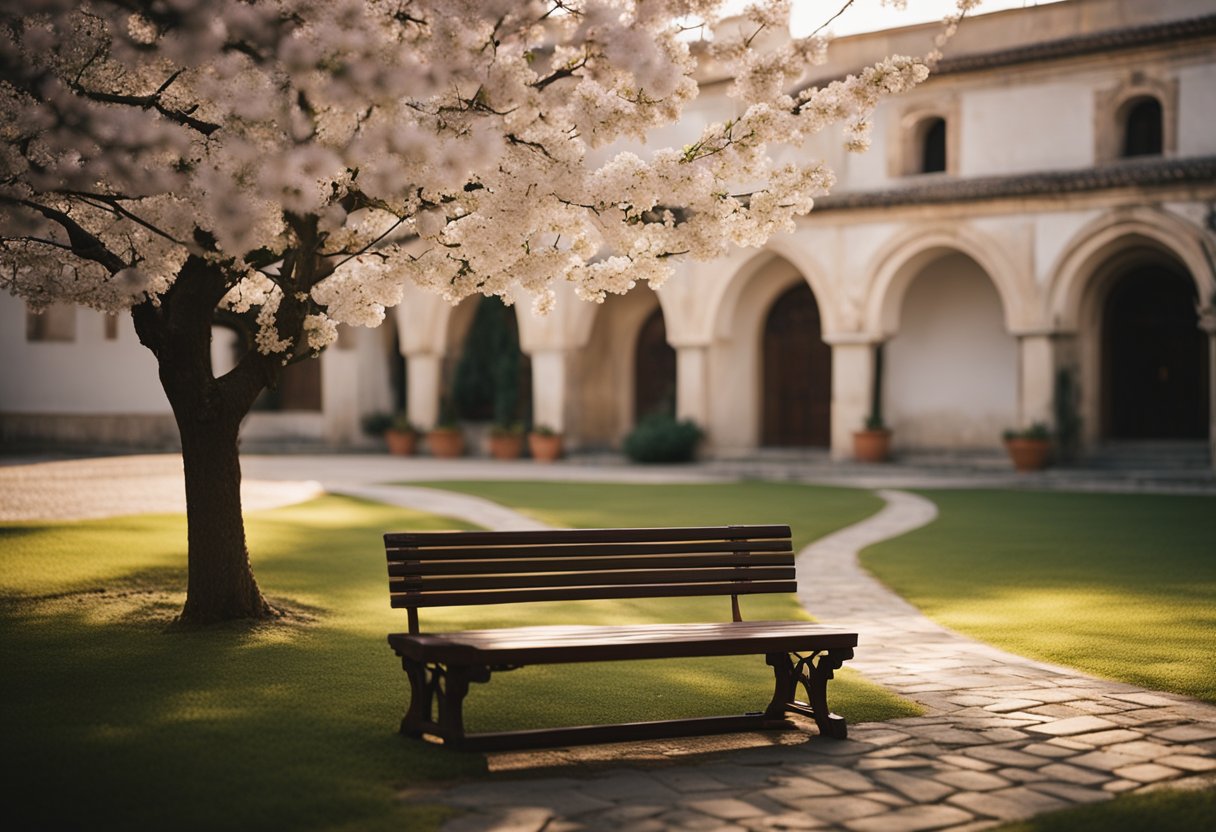
In monastic retreats, the opportunity for personal reflection and growth is paramount. Retreatants find solace in activities like journaling and Lectio Divina which serve as avenues for deep introspection and spiritual development.
The Practice of Journaling
Journaling is a transformative practice that allows individuals to articulate thoughts, emotions, and experiences on paper. This act of writing can become a therapeutic tool, enabling one to express the stirring of the heart with honesty and clarity. Our retreat participants often find that keeping a journal helps to track their spiritual journey, reflect on daily occurrences, and gain insights into their personal growth.
Reading and Lectio Divina
Lectio Divina, or divine reading, is a method of prayer and scriptural reading intended to promote communion with God and to increase the knowledge of His word. It involves moments of reading (lectio), reflection (meditatio), prayer (oratio), and contemplation (contemplatio). Retreat participants engage with sacred texts, slowly reading and allowing the words to resonate deeply. Through Lectio Divina, books become more than mere text; they serve as a dialogue with the divine, fostering an enriching experience of reflection and spiritual nourishment.
Practical Aspects of Planning Monastic Retreats
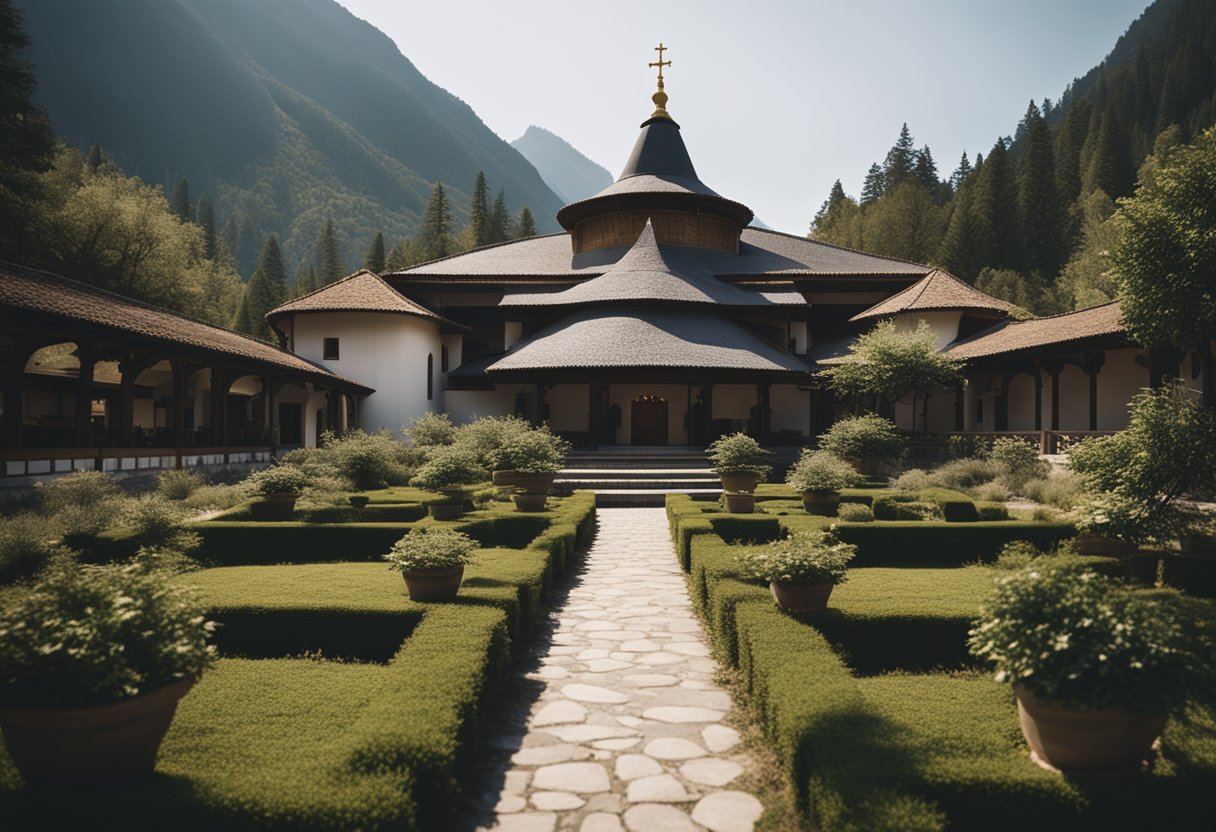
Embarking on a monastic retreat requires thoughtful preparation both logistically and spiritually. It’s crucial that we arrange our stay and consider the community’s guidelines to ensure a peaceful and beneficial experience.
Making Reservations and Considering Donations
When planning a retreat, it’s essential to make a reservation well in advance. Many retreat centres operate on limited guest capacity, ensuring a tranquil environment conducive to rest and reflection. Determine if your chosen retreat requires a reservation for a day visit or a longer stay. As these retreats often run on charitable donations, enquire about the suggested donation for your stay, which covers the cost of lodging, meals, and the support of the monastic community.
- Check reservation availability: Contact the retreat as early as possible to secure your spot.
- Understand donation policies: Retreats typically recommend a range, rather than a set fee, to accommodate varying financial means.
What to Expect During Your Stay
During your time at the retreat, expect a schedule that supports solitude and communal engagement in equal measure. Guests are usually invited to partake in daily services and may be offered guidance on meditation or contemplative practices. Accommodations tend to be simple, reflecting the monastic emphasis on living modestly.
- Daily Rhythm: Be prepped for a structured day of prayer, work, and rest.
- Guest Expectations: You’ll be encouraged to embrace the silence and contribute to the community life.
Our time at these sacred spaces is a chance to break from the bustle and reconnect with ourselves and our spirituality. By attending to these practical aspects, we ensure a harmonious stay that respects both our needs and those of the retreat community.
Embracing Monastic Retreats Traditions
In a world that often seems to rush by, we seek solace in the time-tested practices of monastic life, drawing closer to spiritual tranquillity and embracing traditions established centuries ago.
Living According to the Monastic Rules
Monastic rules serve as a blueprint for cultivating a disciplined life of devotion. Notably, the rules penned by Saint Benedict have been a cornerstone in shaping the way individuals engage with monastic life. These rules encompass a balance of prayer, work, and study, leading adherents to develop their spiritual lives within a framework that has endured throughout the ages. For those of us searching for meaning beyond the material world, adopting these rules can offer a structured approach to personal growth and spiritual fulfilment.
The Various Forms of Monastic Worship
Monastic worship is multifaceted, ranging from the silent, solitary contemplation of hermits to the communal liturgies of cenobitic communities. We engage in worship practices that may include the Divine Office, where prayers are recited at fixed times throughout the day and night. This rhythmic pattern of worship, integral to monastic tradition, unites us with a larger community, a shared voice in a chorus of ceaseless prayer. It is in these acts of worship that we find both our individual and collective connection to the divine.
A Guide to Spiritual Direction
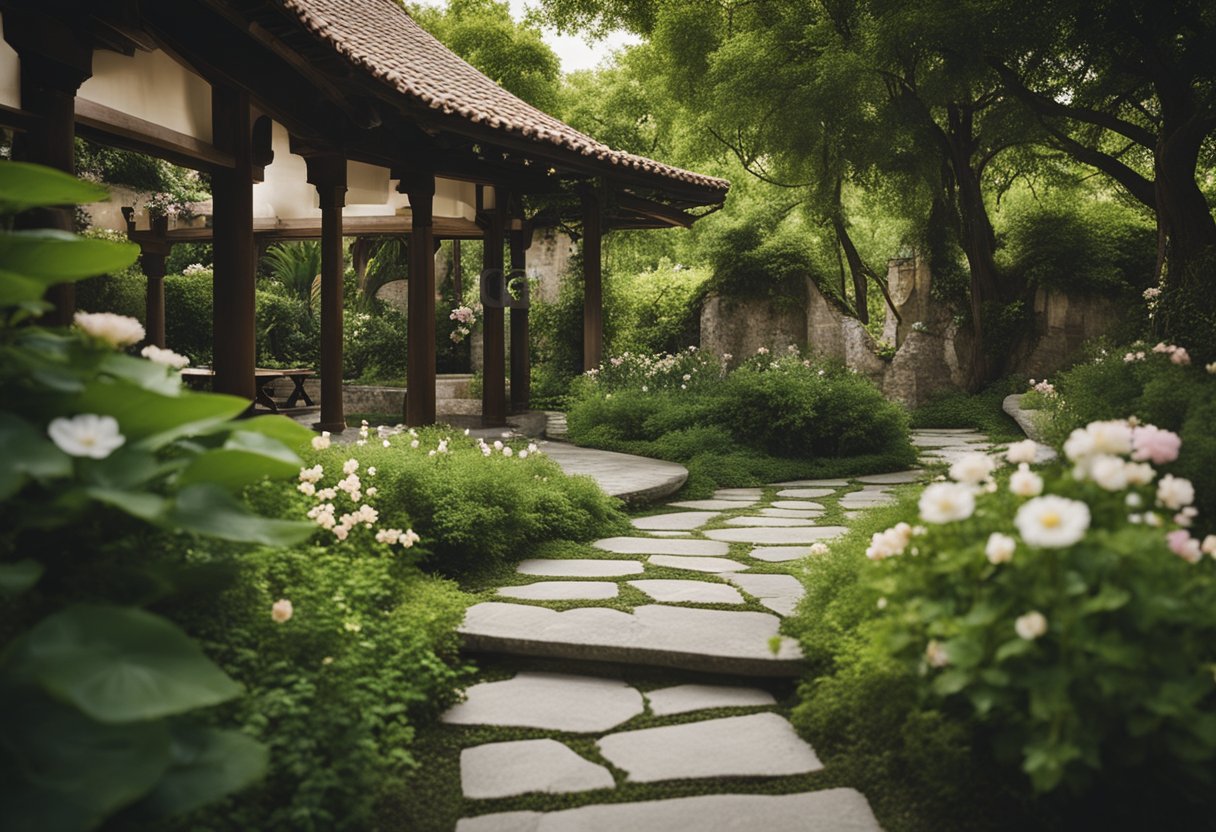
Spiritual direction is a practice that offers guidance and companionship for those on a spiritual journey, regardless of faith or background. It involves meeting with a trained director to reflect on one’s relationship with the divine.
Seeking Guidance on the Journey
In our fast-paced world, spiritual direction serves as a sacred space to explore personal spirituality. Spiritual directors are skilled companions who help us to listen deeply to our lives and to the movements of the spirit within us. They support us in discerning our unique path, offering perspectives grounded in a wide array of faith traditions.
Directed vs Undirected Monastic Retreats
Directed retreats are structured and involve regular meetings with a spiritual director. These retreats often take place in settings that encourage contemplation, such as monasteries, and are focused on deepening one’s relationship with the divine through guided exercises and reflection.
Conversely, on undirected retreats, participants don’t have scheduled guidance sessions but are still provided with an environment conducive to personal reflection and prayer. These retreats, while less structured, still support seekers in their spiritual growth and can be found at places like the Benedictine Sisters of Yankton.
Activities Beyond Stillness

In seeking spiritual growth, we often find ourselves yearning for activities that complement the quietude of prayer and meditation. Monastic retreats cater to this need by offering various tasks and experiences that engage both body and mind.
Engaging with Monastic Work and Crafts
When we visit retreats, it’s not uncommon to find ourselves involved in the monastic community’s daily rhythm through work and craft. Assisting in tasks like gardening or bookbinding allows us to experience a tangible connection to the monastery’s self-sustaining ethos. Some retreats even host workshops in traditional crafts, where we can learn skills such as candle-making or iconography, creating items that serve as mementoes of our spiritual journey.
Exploring Walking Trails and Hikes
Beyond the cloister, the natural surroundings of a monastery often invite us to explore walking trails and embark on hikes. Whether strolling through peaceful gardens or trekking on more challenging paths, these walks provide private retreats within nature herself. They serve not only as exercise but as moving meditations, where the rhythmic melody of our footsteps may become our prayer. Each step taken is a step deeper into reflection, viewed by many as an integral part of their spiritual retreat.
Community and Outreach
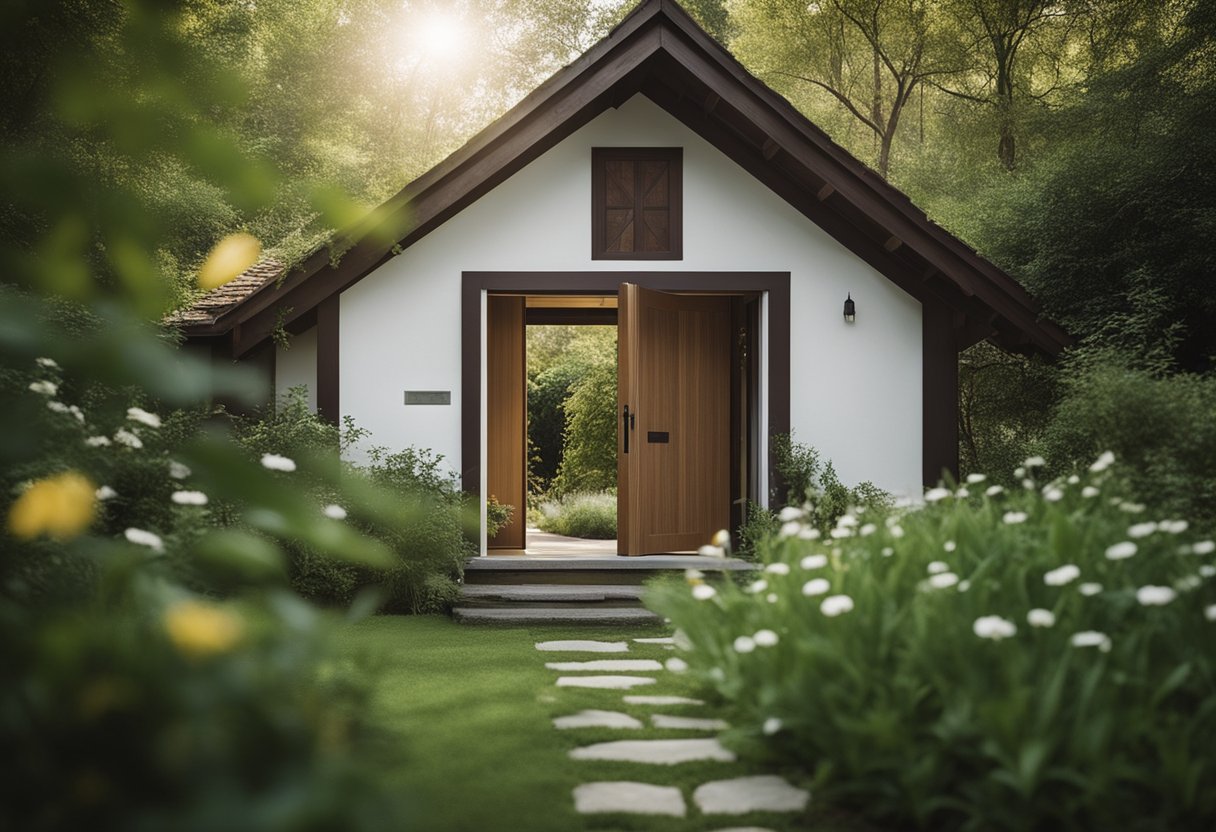
In the heart of monastic life, the essence of community and public engagement thrives through hospitality and the welcoming of guests. This demonstrates the monastic commitment to serving both pilgrims seeking spiritual sanctuary and individuals interested in experiencing the rhythm of monastic life.
The Intersection of Monastic and Public Life
Traditionally, monastic communities have thrived in seclusion, dedicating their lives to prayer and contemplation. However, our outreach efforts signify a bridge between the serene monastic settings and the bustling outside world. Not only do we maintain the contemplative spirit, but we also open our doors to share our traditions with those outside our community. Through this exchange, the public can appreciate the values of monastic life, such as silence, peace, and spiritual growth. The Sisters of St. Benedict exemplify this well, creating sacred spaces that manifest love, justice, and peace.
Hospitality and Welcoming Guests
Our monastic retreats are homes of hospitality where all guests, regardless of background, are received with warmth and respect. It is in our ethos to provide a simple place of solitude and silence for those who seek it. Be you a priest, a deacon, or a layperson, the spirit of welcome remains unchanged. For instance, at the Our Lady of Solitude Chapel, individuals of all ages and faiths are welcomed for retreat days, epitomising our commitment to openness and service.
Frequently Asked Questions
In this section, we’ll address some common inquiries about monastic retreats to help those interested understand the practical aspects and what to expect from such spiritual experiences.
What are the typical expenses associated with participating in a monastic retreat?
Participation in a monastic retreat typically involves costs for accommodation, meals, and any offerings for the guidance provided by spiritual directors. Prices may vary based on the location, duration, and type of retreat.
How does one prepare for a period of seclusion at a retreat?
Preparing for a retreat includes setting intentions, researching the practices involved, and sometimes following specific guidelines provided by the retreat centre. It’s essential to approach the experience with openness to the monastic schedule and an attitude of reflection.
Are there any contemporary monasteries that allow visitors to partake in retreats?
Yes, there are many modern monasteries around the world that open their doors to visitors seeking a retreat experience, often within the Christian or Buddhist traditions, offering guidance in mindfulness and meditation.
What can one expect from a silent retreat at a monastery?
At a silent retreat, one can expect structured days with periods of meditation, spiritual guidance, and time for personal reflection. Silence is maintained to foster a deep sense of presence and internal exploration.
Which Catholic monasteries in California offer retreat opportunities?
Catholic monasteries in California such as the New Camaldoli Hermitage and the Thomas Merton Retreat House offer retreat opportunities for those seeking spiritual growth in the tradition of St. Benedict.
What activities and practices are recommended during a solitary retreat?
During a solitary retreat, it is beneficial to engage in practices like reading, journaling, meditation, and nature walks, tailored to the individual’s needs and the retreat center’s ethos, to enhance the experience of solitude and reflection.






